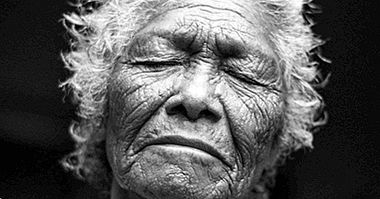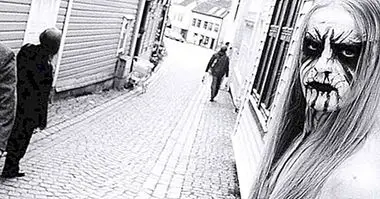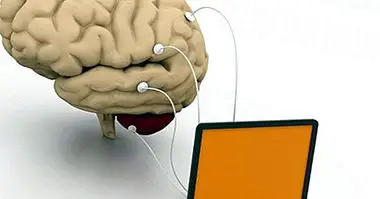Emotional disorders: types, symptoms, causes and treatment
What are emotional disorders and how can we detect them? Throughout the last decades, this type of affectations have been included and rethought in the DSM (Manual of Diagnosis of Mental Disorders).
In this article we will explain each one of these emotional disorders, what symptoms and causes each one has and how they can be managed through therapy or with simple psychological advice.
- Related article: "The 16 most common mental disorders"
Most common emotional disorders
We will know this type of disorders according to their frequency, as well as their most remarkable characteristics.
1. Major depressive disorder
One of the most recognizable mood disorders, and which requires psychological and psychiatric intervention in most cases.
symptom
To be diagnosed with major depression, the mental health professional must perceive at least five of the following symptoms, and for a minimum period of two weeks:
- Depressive state (low mood) during most of the day
- Disinterest and inability to feel pleasure (anhedonia) in all or almost all daily facets, and most days.
- Decrease in body weight abruptly (more than 5% of weight in 30 days), or loss or exaggerated increase in appetite most days.
- Difficulty sleeping (insomnia) or excessive sleep (hypersomnia) almost every day
- Agitation or psychomotor slowness most days
- Low energy most days
- Sensation of uselessness, guilt or existential exhaustion most days.
- Decrease in the ability to maintain concentration, to make decisions ...
- Suicidal ideation, intrusive thoughts about death
- It is a disorder that must be treated by doctors and mental health professionals. Its average appearance is around 25 years of age.
2. Dysthymic disorder
Dysthymia is another mood disorder directly related to depression. To be diagnosed with dysthymia, the patient has to show a depressed mood during most of the day and for a period of at least two years, without there being any lapse of two months in which his mood returns to normal.
symptom
Two or more of the following symptoms must appear during the two-year period:
- Unusual appetite loss or increase
- Difficulty sleeping (insomnia) or hypersomnia (excessive sleep)
- Apathy and low energy
- Self-esteem problems
- Problems to concentrate and make decisions
- There is an average age in which the individual usually presents the first stage of dysthymia: around 20 years.
3. Bipolar disorder
Bipolar disorder, also known as bipolarity, is the predisposition to suffer episodes of mania alternated with stages of major depression. These mood swings lead to states of euphoria and frantic activity over long periods of time, then fall into apathy and despair.
There are two types of bipolar disorder: I and II. They are distinguished in a characteristic of the manic episode. In bipolar I disorder, complete manic episodes are intermittent with the stages of low mood. However, in bipolar II disorder, hypomanic episodes (milder than manic ones) and episodes of depression are intermittent.
symptom
Be that as it may, the symptoms of both subtypes are these:
- Appearance of one or more episodes of major depression
- Appearance of, at least, a manic episode (in bipolar II disorder).
- Appearance of, at least, a hypomanic episode (in bipolar I disorder).
4. Cyclothymic disorder
Cyclothymic disorder is a disorder similar to bipolar II disorder. It is distinguished because its episodes are milder, although its duration over time is longer.
symptom
The symptoms that warn of the arrival of this disorder are the following:
- Various stages of hypomanic symptoms
- Various stages of depression symptoms, but without meeting the criteria of a major depression itself
- Approximately 30% of patients end up leading to a bipolar disorder
- Different studies indicate that the average age at which cyclothymic disorder appears is between 12 and 15 years old.
Causes of emotional disorders
In the scientific and academic community there are different points of view and controversies about what are the most frequent causes of emotional disorders. But nevertheless, Yes, there are several factors that can influence its appearance .
These mental disorders are multicausal. That is, they do not appear because of a single factor, but it is the addition of several factors that can cause the disorder.
1. Genetics
If there is a history in the family of people who have suffered emotional disorders, this may indicate a biological and genetic predisposition. Different investigations conclude that People with family members who have suffered mood disorders are 2 to 3 times more likely to suffer from the same psychological disorder (Gershon, 1990).
However, there are also cases in which a disorder develops without existing or family history can be checked. For this same reason many experts indicate that there are environmental and psychosocial factors that can be closely linked to the onset of diseases such as depression.
2. Biochemistry
The brain and its internal biochemistry have a determining effect on the appearance (or not) of emotional disorders.
- Neurotransmitters: Studies show that low levels of the hormone serotonin in people suffering from depression. This neurotransmitter regulates our emotions, and when we have low levels we tend to be more unstable and vulnerable.
- Endocrine system: several investigations point to the link between the onset of depression and the hormone cortisol. This hormone increases in times of stress and, apparently, is also unusually high in people affected by mood disorders.
3. Stress and traumatic episodes
More than 60% of emotional disorders arise after a bad psychological experience . Psychological traumas and stress are behind most psychological disorders.
When a depressed patient is asked about the life events that occurred just before falling into a state of depression, many of them report having suffered a breakup, having a child, being fired from work, having started a university career ...
With this it is not necessary to understand that the emotional upheaval appears only for that psychological trauma, but that the person already had a predisposition to suffer a disorder of the state of mind, and the stress has accelerated the mechanisms that lead to him.
4. Personality
Certain individuals have recurrent negative thoughts, low self-esteem, locus of external control and tend to worry excessively for the circumstances that life presents to them. This type of personality makes them more likely to suffer an emotional disorder.
They are individuals who incur a very common cognitive bias: arbitrary inference. That is, they tend to highlight the negative factors of a situation or circumstance over the positive ones. In addition, they commit overgeneralization, that is, they draw conclusions of a general nature in the face of specific and negative situations that have occurred to them.
Treatment
There are several ways to treat emotional disorders.
1. Antidepressants
There are three types of drugs that are used to relieve depression: tricyclic antidepressants, monoamine oxidase inhibitors (MAOs), and selective serotonin reuptake inhibitors (SSRIs).
These drugs act in the brain and regulate the neurotransmitters, which leads to the mood of the patient improves in most cases. Anyway, this type of pharmacological treatment has to be prescribed by a psychiatrist, who will follow up on the evolution of the patient.
2. Lithium
Lithium is a common salt that is used as a medicine that regulates mood , mainly in the manic episodes of bipolar disorder. In any case, it has more severe side effects compared to other drugs that fight depression.
In cases of bipolarity, it is also frequent the administration of certain antidepressants in order to alleviate episodes of low mood. Also, antipsychotics such as haloperidol may also be prescribed if your reaction to lithium has not been as expected.
3. Psychological therapy
Psychological therapy is very effective when managing episodes of depression and bipolar disorder. In some cases, especially in bipolar disorder, psychotherapy must be performed in parallel with pharmacological treatment.
Bibliographic references:
- Cooper, R. (2014). Diagnosing the Diagnostic and Statistical Manual of Mental Disorders: Fifth Edition.
- Harris, R. (2012). Question of confidence. From fear to freedom. Santander: Sal Terrae.
- Wykes, T. (2011). Diagnostics to the DSM V (in English). Journal of Mental health.



















